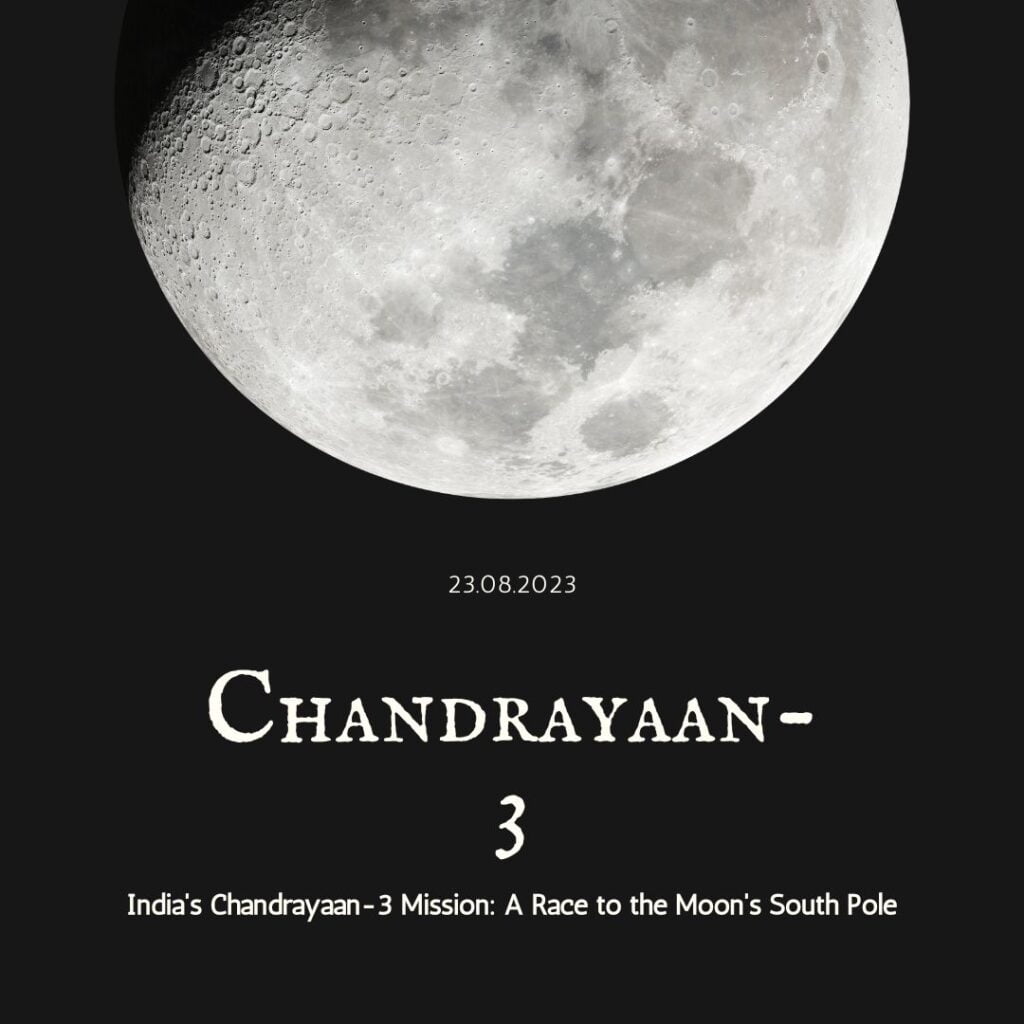
The Chandrayaan-3 mission is India’s third and most recent lunar exploration mission. It includes the Vikram lander, Pragyan rover, and a Propulsion Module (PM) that acts as an Orbiter. The Propulsion Module (PM) carries the Lander and Rover configuration until the spacecraft reaches a lunar orbit of 100 kilometers (62 miles).
Another lunar mission was planned after Chandrayaan-2, which ended in a crash due to a last minute issue with the lander’s landing guidance software after it entered lunar orbit.
Chandrayaan-3 launched on July 14, 2023 (2:35 pm IST) and is scheduled for a powered descent on August 23, 2023 (05:45 pm local time) with a landing of lander and rover on the same day (06:05 pm IST) at the lunar south pole.
Objectives of Chandrayaan-3
India’s space agency, the Indian Space Research Organization (ISRO), has established the following mission objectives:
- Landing a lander on the Moon in a safe and soft manner
- Observing and testing the rover’s maneuverability on the Moon
- In-site observations and experiments on the lunar materials available to better understand the composition of the Moon
How long will Chandrayaan-3 take to reach the lunar surface ?
After 40 days of launch, Chandrayaan-3 will touch down on the moon.
The mission began July 14 with the liftoff of India’s LVM3 heavy lift rocket, which has a payload capacity of approximately 8 metric tonnes. (By comparison, SpaceX Falcon 9 rockets have a payload capacity of more than 23 metric tonnes.)
The LVM3’s extended Earth orbit will have a high point, or apogee, of about 36,500 kilometres or 22,700 miles above the Earth. It will also have a propulsion module connected to the ship. The propulsion module will be boosted multiple times before entering lunar orbit.
Once it reaches the Moon, the propulsion module will release it until it enters a circular orbit at a distance of 100 km (62 miles) from the lunar surface. Then, the two vehicles will separate and the lunar lander will be de-orbited and land on the Moon’s south polar region. At the moment of contact, the lunar module is expected to move vertically at less than 2 meters per second, and horizontally at 0.5 meters per second.
Chandrayaan-3 on the Moon: What will it do?
Landing on the Moon will be a major accomplishment for Indian Space Research Organization (ISRO), which will join a select few nations that have successfully landed spacecraft on other planets. In addition to this, Chandrayaan-3 has technology and science to prove.
Not long after landing, one of Chandrayaan-3’s side panels will deploy, allowing the rover to slide down the ramp. The rover will then emerge from the Chandrayaan-3 belly, begin descending the ramp, and start exploring the lunar environment.
The solar powered lander and the rover will have approximately two weeks to explore the moon’s surface. They won’t be able to survive the cold moon nights. The rover will only be able to talk to the lander which will be able to talk directly to Earth. According to ISRO, Chandrayaan-2 orbiter can act as a backup communications relay.
Chandrayaan-3 Mission:
— ISRO (@isro) August 23, 2023
All set to initiate the Automatic Landing Sequence (ALS).
Awaiting the arrival of Lander Module (LM) at the designated point, around 17:44 Hrs. IST.
Upon receiving the ALS command, the LM activates the throttleable engines for powered descent.
The… pic.twitter.com/x59DskcKUV
Chandrayaan-3 Design
There are three main parts to Chandrayaan-3 :
- Propulsion module
- Lander
- Rover
Propulsion Module : Propulsion module will carry the rover and the lander configuration to a range of up to 100 kilometers from the moon’s surface. The module is a box-like structure with a big solar panel on the side and a big cylindrical top structure (Intermodular Adapter cone) that acts as the mounting structure for the lander.
Lander : The soft landing on the moon was due to the lander, which has four landing legs and four 800 Newton landing thrusters. The spacecraft is also box-shaped, and it will carry the rover along with many scientific instruments for on-the-ground research.
Chandrayaan-3 lander will only have 4 throttle-able engines that have thrust valve slew rate changing capability as compared to Vikram’s 5 800 Newtons (5 centrally installed with fixed thrust) engines on Chandrayaan-2.
Rover :
- 6-wheeled construction
- 26 kilogrammes (57 pounds) in weight
- 500 metres (1,600 feet) of range
- 917 millimetres (3.009 feet) x 750 millimetres (2.46 feet) x 397 millimetres (1.302 feet) are the dimensions.
A number of significant scientific advancements are anticipated from the Chandrayaan-3 rover, including:
- The composition of the Moon’s surface
- Water ice in the Moon’s soil
- The impact history of the Moon
- The changes in the Moon’s atmosphere
Read more :